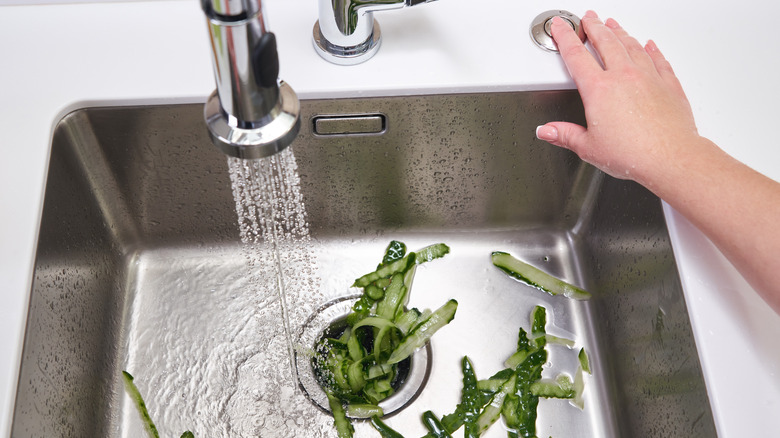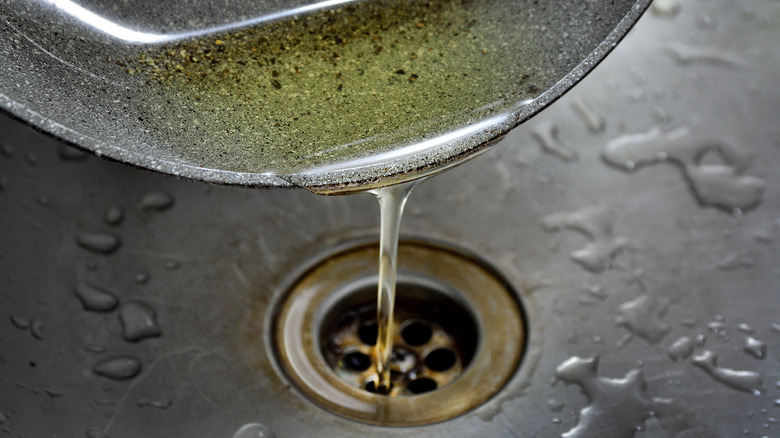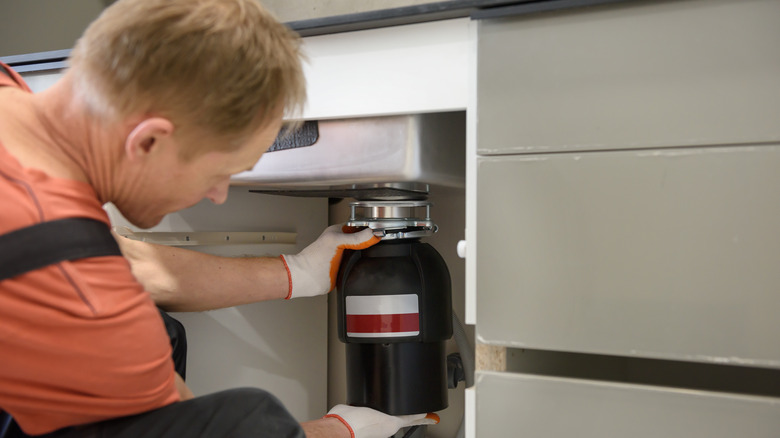Should You Run Water When Using Your Garbage Disposal?
If your kitchen is equipped with one, a garbage disposal –- that handy little chomper that resides under the sink, attaches to the drain, and has a voracious appetite for food scraps –- is your best friend during meal cleanup ... until it gets jammed or stops functioning altogether (and that unfortunate event usually happens without warning once you've scraped all the food waste into it). Knowing how to properly use the garbage disposal will prevent most of these frustrating stoppages, prolong the life of the machine, and keep you safe (because having to clean the clogged food debris from the machine's blades isn't easy or fun).
Running cold water -– and only cold water –- is the most important thing you can do to extend the life of the disposal. Run it before the food material is added during the grinding process, and continue to run water for several seconds after turning the disposal off, says Boulden Brothers. Using hot water will lead to clogs and other issues as it causes fats to break down and liquefy, which seems good at first -– until those fats return to a solid form on the blades and in the pipes when they have cooled again. According to Tasting Table, cold water keeps fats solid and then washes them away before they can melt and coat anything.
Keep these things out of the garbage disposal
In addition to using enough cold water during garbage disposal operation, there are items that should never be put in the machine. As a powerful tool, we tend to forget it is only for food scraps; its blades and motor are not designed to handle other debris. As mentioned earlier, hot water is a big NO, and there are several other things that shouldn't go in the disposal either because they will either damage the unit or cause a blockage, which includes coffee grounds, bones, starchy foods like pasta and potato skins, seeds, shells, nuts, pits, shrimp and crab shells, as well as shellfish, eeggshells, and fibrous or stringy produce like banana peels and celery.
Restyled Junk advises to always run the water before adding scraps and never add scraps before turning the machine on. It's crucial for the longevity of the machine to not overfeed it — a serving of scraps is about the size of the drain strainer at a time. Yes, invest in a drain strainer. Oftentimes, because the mouth is wide open and protected only by pieces of rubber, things slip into the hopper without being noticed –- utensils, wrappers, unintended food scraps, small glasses, etc., causing damage to the unit. And then, removing these sharp particles is dangerous and difficult. A simple drain covering that allows for water to run through it will prevent a lot of problems.
How to handle common garbage disposal problems
A garbage disposal needs to be run often in order to remain free of rust and odors. Drain Terrier recommends running water down the drain and turning the machine on for several seconds every few days to keep it operating smoothly. If bad smells are coming from the drain, run small pieces of lemon rinds through the disposal. The lemon won't clean the disposal but will offer a short burst of deodorizing. Vinegar will actually help disinfect the unit, but the smell isn't pleasant. You can also mitigate smells by tossing ice in the hopper (the small holding area with blades at the bottom) to be chopped up. Ice won't sharpen the blades, but it helps to dislodge food particles that can cause odors, says Restyled Junk.
If a blockage occurs, turn the unit off and unplug it (unless it's hardwired in). Sticking your hand into the opening of the garbage disposal isn't advised for safety reasons but is sometimes necessary. To dislodge any debris, try using long tongs or pliers. Once cleared, try restarting the disposal with the reset button located on the housing of the unit under the sink. If that doesn't work, you may have to call a professional to investigate the problem further.
So, remember, these rules can keep your disposal working well: keep it clean, use cold water, feed it food scraps in small amounts, cover it to prevent things from falling into it, and practice safety.


